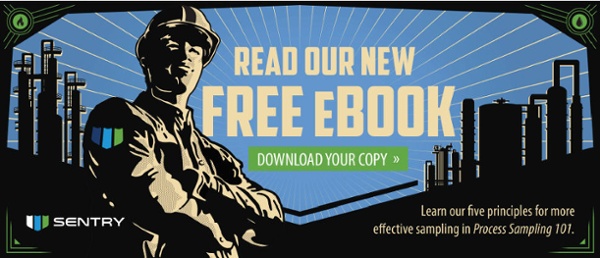
Crude oil distillation allows crude to be transformed into petroleum products for transportation, heating, paving roads, generating electricity, and feedstocks. Regular representative sampling helps ensure that distillation and other equipment and processes aren't adversely affected.
Distillation: Starting CRUDE OIL REFINING
Distillation separates mixtures of liquids by exploiting differences in the boiling points of the different components.
Crude oil is a mixture of hundreds of liquid hydrocarbons, including methane, ethane, propane and butane. Refineries distill crude oil into its main fractions of naphtha, kerosene and gas oil.
The crude oil mixture is heated with high-pressure steam. The vapors from this liquid rise up into a fractional distillation column. This column contains several trays. Each tray captures its designated vapor as it's separated from the other vapors according to their boiling points.
Heavy fractions are captured on the bottom, and light fractions are on the top. For example, the substance with the lowest boiling point (such as car gasoline) will condense at the highest point in the column, and substances with higher boiling points (such as lubricating oil) will condense lower down in the column.
Challenges of the Distillation Process
The risk of corrosion. Water is often added when heating crude oil, which can introduce corrosion within the distillation equipment.
Mitigating this corrosion is critical to a refinery's processes because the distillation unit feeds the rest of the refinery – any outages or disturbances within the distillation equipment can affect the availability of the entire refinery.
Product quality and consistency. Distillation occurs in a single column and is collected by trays within that same column, which means that cross-contamination can occur as the product cools or if temperature and pressure calibrations aren't accurate.
Quality checks are essential since products in higher trays undergo less processing than in the lower trays.
Mitigate Challenges in the Distillation Process
Select the appropriate distillation process. According to the metrics your plant wants to monitor, there are several types of distillation processes to choose from. Three different distillation methods are commonly used to generate laboratory data on crude oil:
- True Boiling Point Distillation (TBP)
- ASTM Distillation (ASTM)
- Equilibrium Flash Vaporization (EFV)
The degree of separation between the distillation fractions obtained in these methods decreases significantly from TBP through ASTM to EFV. Each technique and its associated distillation data have different refineries' applications, making it essential to choose the proper process for your plant and distillation process.
Monitor and Control Corrosion. Establishing a corrosion mitigation strategy is critical to maintaining the availability and performance of the crude unit.
Real-time corrosion monitoring provides insight into your atmospheric and vacuum distillation units' performance to help maximize performance, capacity, and profitability.
Implement Representative Sampling. After distillation, establishing a low-emission sampling system will help ensure the product meets the correct composition and doesn't contain any chemical contaminants from catalysts or corrosion within the distillation column.
Crude oil and its fractions must be sampled to yield representative samples for analysis. The resulting data is used for quality control, determining product properties and composition, and fiscal calculations, allocations, and loss control.
In addition to complying with custody transfer standards such as API 8.2 and ASTM D 4177, the advantages of representative sampling include:
- Higher return on investment
- Better loss control
- Lower operating costs
At Sentry Equipment, we have extensive experience and expertise in supporting various applications and various sampling cases within one refinery site and throughout an entire company. We offer customized solutions that help your refinery maximize distillation to ensure capacity and optimize performance.
Contact us to learn more about how Sentry Equipment can support your oil and gas applications.




